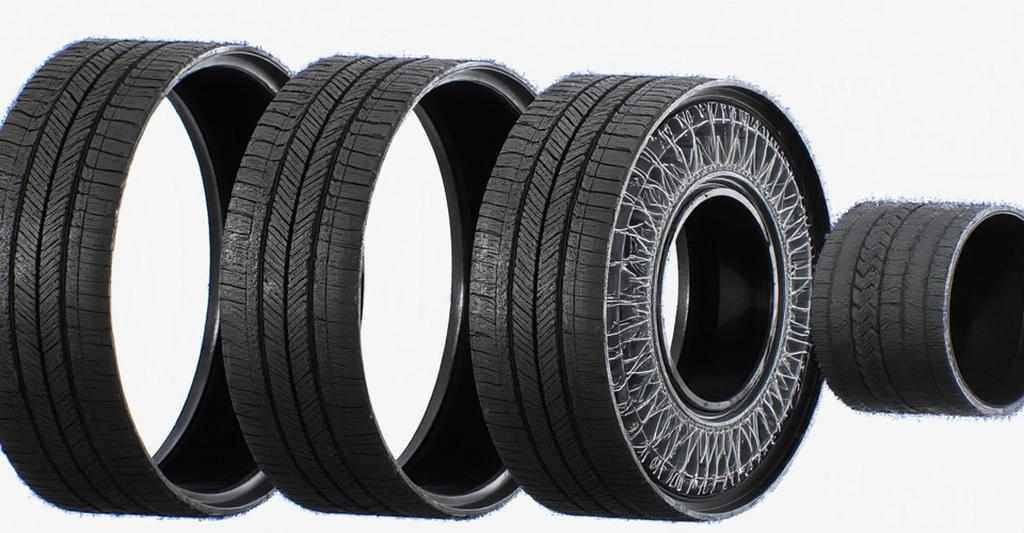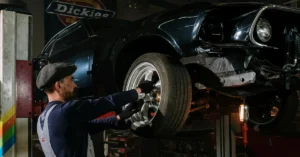For over a century, pneumatic tyres those familiar black rubber rings filled with air have been a fundamental part of automotive engineering. But as vehicle technology rapidly evolves, so too does the way we think about one of the most essential parts of a car: the tyre. From electric vehicles to autonomous fleets, today’s mobility needs are putting unprecedented demands on traditional tyre design. And now, a bold new concept is gaining traction: airless tyres.
What Are Airless Tyres and How Do They Work?
Airless tyres, also known as non-pneumatic tyres (NPTs), do away with the traditional need for air pressure to support the vehicle. Instead, they use high-strength materials like plastic spokes, advanced polymers, and reinforced rubber to create a structure that can flex and absorb road impacts without going flat. These internal supports often resemble a honeycomb or spoke-like design, offering stability and shock absorption while eliminating the risk of punctures or blowouts.
Manufacturers like Goodyear, Michelin, Hankook, and Bridgestone are all investing heavily in developing airless tyre technologies. Each company takes a slightly different approach:
- Goodyear has tested its airless prototypes on a Tesla Model 3, noting excellent stability and performance. Their tyres use thin reinforced rubber and plastic supports that deform under load but continue to function.
- Michelin is preparing to launch its Uptis tyre (Unique Puncture-proof Tire System), developed in partnership with GM. Uptis uses a mesh structure made of fiberglass and composite rubber, designed to be zero-maintenance and recyclable.
- Hankook recently unveiled its i-Flex tyre, using interlocking polyurethane spokes optimized for lateral and horizontal forces.
- Bridgestone is focusing its airless research on industrial applications such as agriculture and mining where downtime is costly.
Why the Push for Airless Tyres Now?
Several trends are pushing this innovation forward:
- Electric Vehicles (EVs): With heavy battery packs, EVs benefit from airless tyres that can carry more load without compromising comfort. They also reduce maintenance, which is ideal for fleet and delivery vehicles.
- Autonomous Driving: Vehicles that operate without human drivers like shuttles and robotaxis need tyres that require little to no upkeep. A flat tyre could take an entire ride-hailing vehicle out of service, impacting operational efficiency.
- Sustainability Goals: Many of these tyres are being developed with fully recyclable materials. Michelin envisions a 3D-printed, connected, and 100% renewable tyre that could revolutionize the industry.
- Smart Features: Airless tyres are a natural fit for smart sensors. Imagine tyres that monitor tread wear, temperature, and even road conditions feeding real-time data to both drivers and city infrastructure.
Challenges Still to Be Addressed
While the vision is promising, airless tyres aren’t ready to fully replace their pneumatic counterparts just yet. Some hurdles include:
- Ride Quality: Without the natural cushioning that air provides, airless tyres can be noisier and transmit more road vibrations.
- Rolling Resistance: These tyres often have a larger surface contact patch, which can increase drag and affect energy consumption especially important for EVs where battery range is a key concern.
- Cost and Availability: Currently, these tyres are more expensive to produce, and widespread adoption will depend on economies of scale and regulatory approvals.
A Gradual Road to Mainstream Adoption
Airless tyres are likely to make their debut in controlled environments such as last-mile delivery vehicles, autonomous shuttles, and industrial machinery. Over time, as the technology matures and production scales up, we could see these tyres appear on mainstream passenger cars.
Some manufacturers even envision a future where consumers don’t purchase tyres outright. Instead, they might pay per kilometre based on usage, with sensors calculating wear and enabling automatic retreading or replacement.
Are Air-Filled Tyres Going Away?
Not anytime soon. According to experts from Continental, pneumatic tyres still offer the best balance of comfort, safety, and fuel or rather, petrol efficiency. In fact, manufacturers are also innovating within traditional tyre design, introducing features like self-inflating systems, recycled materials, and latex alternatives like dandelion sap.
So while the airless tyre is certainly a compelling vision of the future, it will likely coexist with enhanced versions of today’s tyres for years to come.
What It Means for Everyday Drivers
For now, you’ll still need to check your tyre pressure, look out for punctures, and rotate your tyres regularly. But don’t be surprised if your next car especially if it’s electric or shared comes equipped with a new kind of tyre that doesn’t need inflating at all.
And as connected vehicle technology grows, even traditional tyres will become more intelligent, feeding valuable information back to drivers, fleets, and even city planners.
Final Thoughts
The humble tyre is undergoing one of its biggest evolutions since it was first invented. Airless tyre technology has the potential to make driving safer, more sustainable, and less of a hassle. And while they’re not yet ready to take over the roads, they’re no longer a far-off concept.
At MotorHub, we’re always watching the road ahead. Whether you drive an electric car, manage a fleet, or just want expert tyre care, our network of trusted garages is here to help.
Stay informed. Stay safe. Stay on the road.

